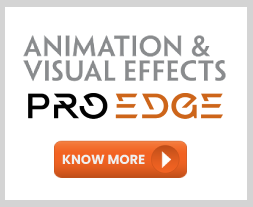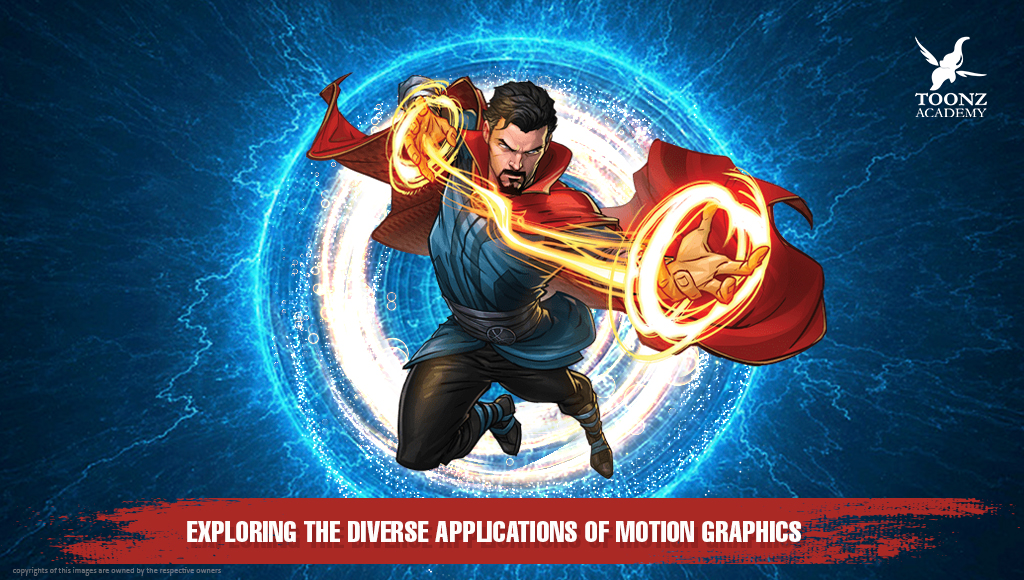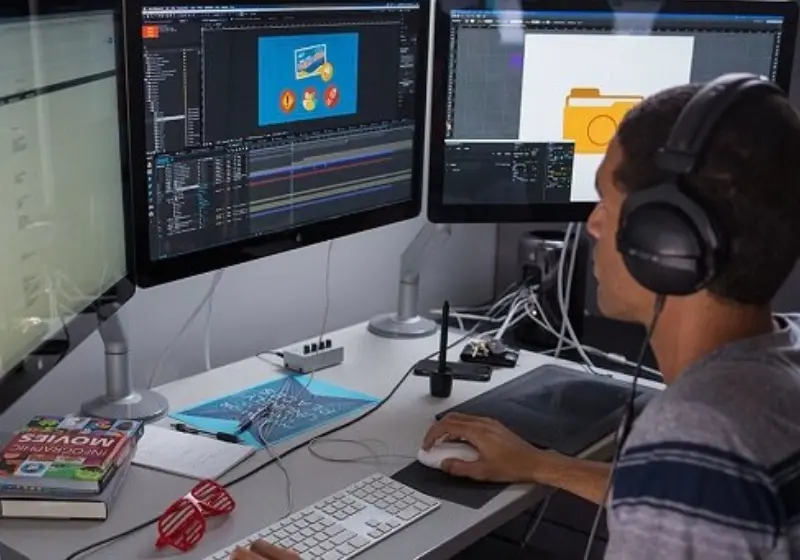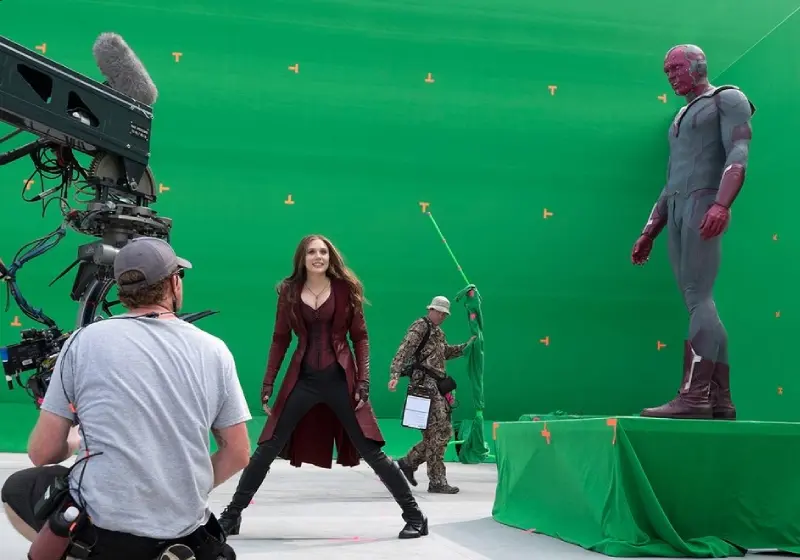Motion graphics refer to animated visual elements or graphic designs that use movement, often in combination with audio, to convey information, tell a story, or create a visual experience. These graphics are typically used in various multimedia formats, including films, television shows, advertisements, presentations, websites, and mobile apps. Motion graphics can encompass a wide range of styles and techniques, from simple animations of text and shapes to complex, cinematic visual effects.
Key characteristics and elements of motion graphics
Animation
Motion graphics are inherently animated, involving the movement of visual elements. This animation can be achieved through techniques like graphic elements, keyframing, tweening , morphing, and 2D & 3D process.
Kinetic Typography
Text is a common element in motion graphics, with animated typography used to display information, convey messages, or emphasize key points. Kinetic typography is a subset of motion graphics that focuses on animated text.
Effects
Motion graphics often incorporate visual effects, such as particle systems, simulations, and dynamic simulations, to create engaging and immersive visuals.
Narrative and Storytelling
Motion graphics are used to tell stories or convey narratives. They can be used in title sequences, explainer videos, and documentaries to enhance storytelling.
Data Visualization
Motion graphics are effective for presenting complex data and information in a visual and understandable format. They are commonly used in infographics, charts, and data-driven animations.
Transitions
In video editing and presentations, motion graphics are employed for smooth transitions between scenes or slides, adding a professional and polished touch to the content.
Sound and Music
Motion graphics are often paired with sound effects and background music to enhance the viewer’s experience and reinforce the message or mood.
Motion Graphics. Where is it used?
Motion graphics is continuously evolving and adapting to new technologies and platforms, expanding their utility across industries and applications. The ability to engage and inform audiences makes motion graphics a valuable tool for effective communication and storytelling.
Advertising and Marketing
Television Commercials: Motion graphics are used to create visually appealing and attention-grabbing advertisements.
Digital Advertising: Online ads, including banner ads, social media ads, and video ads, often feature motion graphics to promote products and services.
Explainer Videos: Motion graphics simplify complex concepts, making them ideal for explaining products, services, or processes in a compelling way.
Entertainment Industry
Film and Television: Motion graphics are used in title sequences, visual effects, and animated sequences in movies, TV shows, and documentaries.
Video Games: In-game animations, HUD (Heads-Up Display) elements incorporate motion graphics.
E-Learning and Education
Online Courses: Motion graphics make educational content more engaging and easier to understand by visualizing abstract concepts.
Interactive Learning Modules: Educational platforms often employ motion graphics to create interactive lessons and tutorials.
Information Visualization
Data Visualization: Motion graphics help present complex data sets in a visually appealing and comprehensible format, aiding in data analysis and decision-making.
Infographics: Animated infographics convey statistics, trends, and information in a more engaging manner than static graphics.
Corporate Communications
Presentations: Motion graphics enhance presentations, making them more dynamic and engaging for audiences.
Corporate Videos: Companies use motion graphics in videos to communicate their brand messages, values, and achievements.
Web and Digital Media
Website Design: Motion graphics can be incorporated into web design to create interactive and visually appealing user interfaces.
Social Media Content: Short motion graphic videos are highly shareable on social media platforms, making them effective for brand promotion and storytelling.
Healthcare and Medical Animation
Patient Education: Medical institutions use motion graphics to create informative videos and animations for patient education, explaining medical procedures and conditions.
Technology and User Interface (UI)
Software and Apps: Motion graphics enhance user interfaces, making software and mobile apps more user-friendly and visually engaging.
UI Design: Interface elements like buttons, transitions, and animations in software and apps often employ motion graphics.
Event Promotion
Conferences and Exhibitions: Motion graphics are used to create promotional materials and video content for events and conferences.
Motion graphics are continually evolving and adapting to new technologies and platforms, expanding their utility across industries and applications. Their ability to engage and inform audiences makes them a valuable tool for effective communication and storytelling.
The scope of motion graphics is extensive and continues to expand as technology evolves and the demand for visually engaging and interactive content grows across various industries.
Join the animation revolution! Discover more at Toonz Academy !




